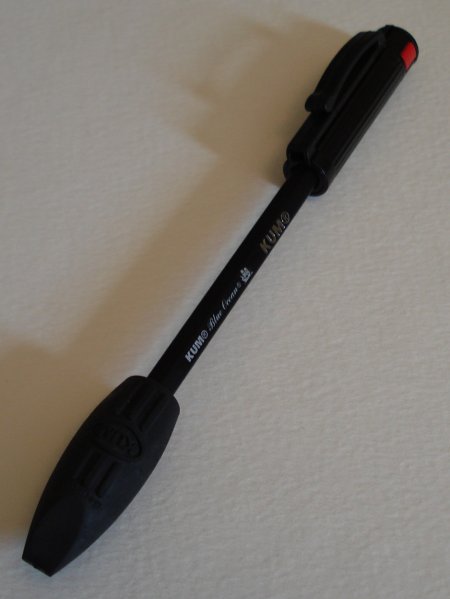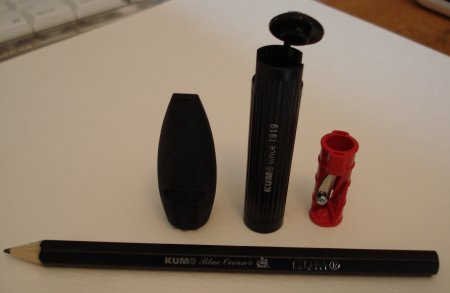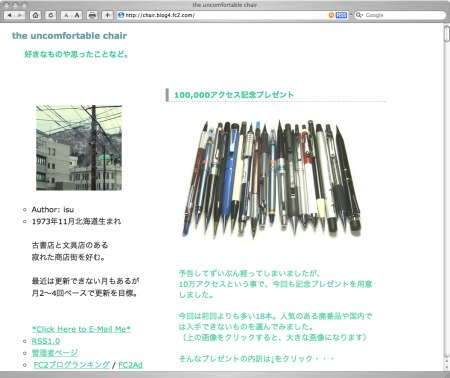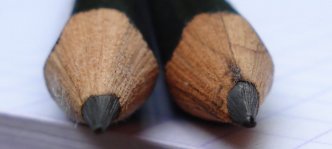
KUM is a well known pencil sharpener manufacturer. Though inhabiting a very specialized market, they have an enviable reputation as a quality manufacturer with international distribution.
What may not be as well known is that KUM sells pencils – three by my count, all part of larger product offerings.

Today we’ll look at the KUM Blue Ocean. At first glance it appears to be a small barbell – perhaps a discreet exercise product for office workers.
Closer inspection reveals that this is a pencil – housed at one end by an eraser, and at the other by a plastic cap. We’ll look at each of the three devices in turn.
The eraser is gigantic for a pencil cap type eraser – a black mini-football marked with the KUM logo on two sides. It does erase quite well. It weighs in at 10.7g.
The cap is marked “KUM since 1919”. It is black grooved plastic, with the appearance somewhat clunky in my view. The top of the cap has a true “cap” – a small piece of attached plastic that can be removed to reveal a red plastic sharpener.
Typical of a KUM product, there is a screw on the blade, and I suspect that the blade is replaceable. It works as a sharpener, but it is challenging to get a proper grip.
The cap/sharpener weigh 6.7g.
The pencil itself is marked in silver on matte black, “KUM Blue Ocean KUM”. It is 125mm long, below standard length.
The cap is rounded but unfinished. The wood is very pale – basswood?
The lead is a surprise – a very dark 2B perhaps, good though not the smoothest.
So back to the barbell comparison – a typical modern pencil is 4g, and the Blue Ocean pencil is 3g. But this eraser is 10.7g and the cap 6.7g. So this is a lopsided barbell.
All aspects of the product have problems. The eraser is simply too heavy to be a pencil cap eraser. At triple to quadruple the weight of a woodcase pencil, a pencil falls backward out of one’s hand with this eraser attached.
Even with a tightened grip, the balance is all off. While perhaps KUM wanted to offer value, or the appearance of a substantial eraser, a 10.7g eraser is simply too heavy for a pencil cap eraser.
The cap/sharpener is awkward and clunky. It does not taper towards the pencil, and cannot be comfortably held.

KUM’s concept is not new to us. I think we have to give credit where it is due, and thank Faber-Castell for their Perfect Pencil line. However, unlike the Faber-Castell products, KUM’s Blue Ocean product is not practical, and barely usable.
I commend KUM for trying something new – but the execution leaves much to be desired.








